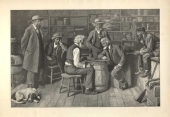The Checker Maven
The World's Most Widely Read Checkers and Draughts Publication
Bob Newell, Editor-in-Chief
Published every Saturday morning in Honolulu, Hawai`i
Noticing missing images? An explanation is here.
Unpublished Variation(s)
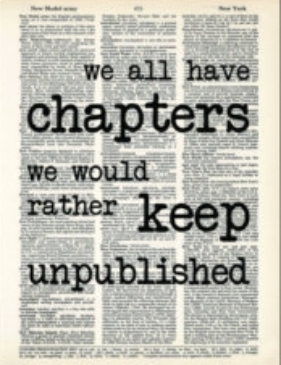
The above quotation comes from the popular television series Downton Abbey, and surely it rings true for life in general.
But for our game of checkers, we suggest that the situation is different, and bringing to light unpublished play is sometimes instructive and revealing.
That's the case today, as we conclude our extended series on the Kelso taking from Willie Ryan's famed Tricks Traps & Shots of the Checkerboard, with something Willie calls "a fine unpublished variation."
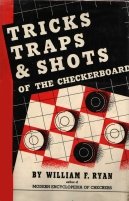
Let's first give the entire run-up, without commentary.
| 1. | 10-15 | 22-18 |
| 2. | 15x22 | 25x18 |
| 3. | 6-10 | 18-14 |
| 4. | 10x17 | 21x14 |
| 5. | 9x18 | 23x14 |
| 6. | 1-6 | 29-25 |
| 7. | 12-16 | 26-23 |
| 8. | 16-19 | 24x15 |
| 9. | 11x18 | 28-24 |
| 10. | 8-11 | 24-19 |
| 11. | 4-8 | 31-26 |
| 12. | 6-9 | 19-15 |
| 13. | 11-16 | 26-22 |
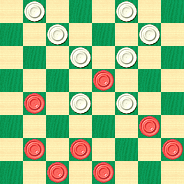
BLACK
Black to Play and Draw
B:W32,30,27,25,23,22,15,14:B18,16,9,8,7,5,3,2.
The critical position. Willie gives the following spectacular clearance as his main line draw:
| 14. | 16-19 | 23x16 | |
| 15. | 7-11 | 16x7 | |
| 16. | 3x26 | 30x14 | |
| 17. | 9x18 | 27-23 | |
| 18. | 18x27 | 32x23 | |
| 19. | 2-7 | Drawn. | |
But let's go back to the diagram. Willie says, "If 9-13 is played, 14-10, 7-14, 15-10 will be good enough ..." and certainly after 2-7 22-15 the draw is on the board. Now, Willie goes on to claim: ... if 16-20 is selected, the following leads to a draw: ..." and then he gives J. P. Murray's previously unpublished variation.
So, from this position:
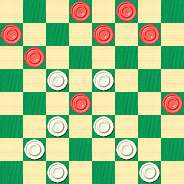
WHITE
White to Play and Draw
W:W32,30,27,25,23,22,15,14:B20,18,9,8,7,5,3,2.
can you find the White draw? This isn't especially easy, but what's interesting is that there are actually two drawing moves for White, one of which the computer discovered ... perhaps a whole new unpublished variation?
Give it your best effort, and the solution, which we'll certainly not leave unpublished, can be reached by clicking on Read More.![]()
As Easy As Pie
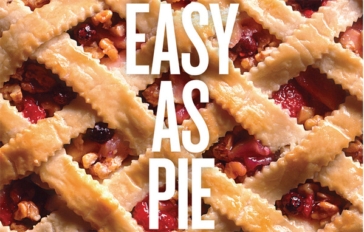
We've often said that we present a range of problems in our Checker Maven columns; sometimes they're grandmaster tough, sometimes beginner easy, but most are usually somewhere in-between. We have readers with a very wide range of skills, and we try to provide something for everyone. We suggest the following: when you find a problem is tough, study the solution with a view to learning technique; when it seems easy, try for rapid sight recognition.
Today, though, we've got a truly easy-as-pie problem that even many early-stage checkerists will solve right away. See how quickly you can spot the solution!
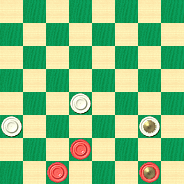
BLACK
Black to Play and Win
B:W15,12,K9:B7,3,K1.
By the time you read this line, you've probably already solved it, but just in case, you can ease over to Read More to check your answer.![]()
Winter Break

If you live in a cold North American climate, you probably can use a bit of a winter break. Now, there's a definite difference between a winter break--- an escape from the cold--- and a spring break, which is often associated with hijinx on the part of college students.
But we think a winter break can also stand a bit of mischief, at least of the checker nature. So we've chosen a problem that was originally titled "Maryland Mischief." Surely, Maryland can suffer from some serious winter weather, and perhaps this is a Marylander's way of taking a break. Have a look and see what you think.
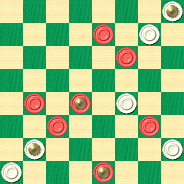
WHITE
White to Play, What Result?
W:B7,11,17,22,24,K18,K31:W8,19,28,29,K4,K25.
Attributed to a Wilson Coudon of Elkton, Maryland, you can tell you're in for some mischief from the problem terms alone, as it's one of those "What Result?" puzzlers that often leave you guessing. That diagonal lineup looks pretty mischievious, too. Perhaps the fact that White is down a piece will provide a clue?
Take a short winter break and see what you can do with this one, then click your playful mouse on Read More to see the solution.![]()
Leeds Express

The British train known as the Transpenine Express certainly goes to Leeds, but the title of today's Checker School column deals with a position first published in an old newspaper known as The Leeds Express.
Surprisingly, our intrepid research department didn't turn up very much on this publication, which obviously enough once featured a draughts column. The most likely candidate is the Leeds Evening Express, published by Frederick Robert Spark starting in 1867. Today, there is a Leeds Express published by Johnston Publications, a major British publisher of local and regional newspapers. There was also the Skyrack & East Leeds Express, later called the Leeds Skyrack Express and then Leeds Express, which ended publication in 2002. But given the date of today's study, we'd stick with the Leeds Evening Express as the source.
Confusing? Unraveling publication histories is at times as difficult as solving a challenging checker problem. Now, the position below may not be the toughest ever, but it too surely requires some thought.
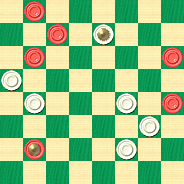
WHITE
White to Play and Draw
W:W27,24,19,17,13,K7:BK25,20,12,9,6,1.
Can you unravel this one? We ourselves had some serious unraveling to do, as you'll see when you click on Read More to see the solution, notes, and a sample game.![]()
Le rouge et le noir
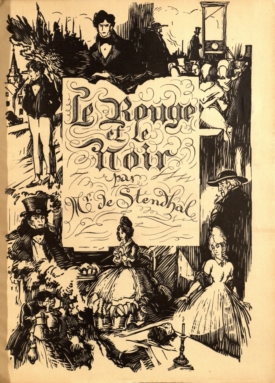
We've received a comment from a highly respected reader to the effect that our speed problems are confusing and as a result, unfair. Our reader has asked us to state in advance the terms of the problem and to allow a little extra "orientation" time. Not displaying the Javascript clock was another suggestion, as the reader deemed it distracting.
We're trying out some of these ideas today. By eliminating the clock, of course, we eliminate the timed challenge and in a way negate the idea of a "speed" problem; the idea will be to simply see how fast you can spot the solution, without any external pressure.
The reader also suggested that since our diagrams show Red and White pieces, we should discontinue use of the term "Black" in favor of "Red." That's a bit more complicated, in that much of the literature we quote uses the terms "Black" and "White." In our early days, we indeed used black and white diagrams, but the red and white proved much more popular.
What to do? Red or Black? Le rouge ou le noir? For now, we're continuing with Black rather than Red, but we'd love to hear your opinions. Write to us at redorblack@checkermaven.com.
But let's go ahead and look a typical speed problem. Black (Red) is at the bottom of the board, moving up, and the terms are Black (Red) to play and win. There's no clock and so no particular time limit. We've also provided both a Red/White and a Black/White diagram. Which do you prefer?
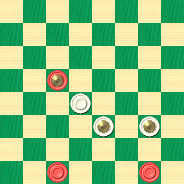
BLACK
Black to Play and Win
B:W15,K10,K9:BK19,3,1.
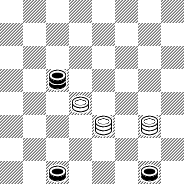
BLACK
Black to Play and Win
B:W15,K10,K9:BK19,3,1.
Click on Read More when you're ready to check your solution.![]()
Complete Checkers, by Richard Pask

Grandmaster Richard Pask's crowning achievement, Complete Checkers, is now available in electronic and print editions. We are proud to say that Mr. Pask once again gave us the honor of editing, typesetting, and publishing his latest work.
Combining all seven sections of 21st Century Checkers with much new material, including guides and indices as well as play revisions and enhancements, the book extends to over 730 pages, with 200 diagrams and some 2,200 complete games. It will be the definitive guide to 3-move ballot play for decades if not generations to come. Mr. Pask has built on the work of the great players and masters, applying his own vast knowledge and expertise, and employing powerful modern computer engines to validate and extend the analyses.
The result is incomparable, and due to Mr. Pask's generosity, the electronic edition is yours as a completely free PDF download. Just go to the Richard Pask page, as linked in the right-hand column. It was our mutual desire that the book be available to everyone, everywhere, without barriers caused by financial limitations.
But, means permitting, you may likely wish to have a print copy. The print edition is perfect-bound with full-color covers and can be obtained from Amazon or CreateSpace as well as Amazon UK and Europe sites. It is priced very modestly at $24.99 in the US. We put a lot of care into the print edition and we think you'll find it a great addition to your checker library, providing you with years of high-level study material.
Now, just to get you going, here's a position from some of the new material Mr. Pask added to this edition.
BLACK
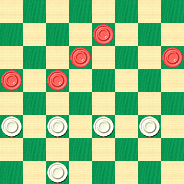
WHITE
White to Play and Win
W:W30,24,23,22,21:B14,13,12,10,7.
There is more than one way to do this, but the differences are in the details rather in the basic principles. The solution is a bit long and you may not find it easy, but we'll give you a broad hint: think about achieving a simpler, known winning position.
Book your solution and then page over to Read More to see a solution.![]()
Easy Peasy

We were surprised to learn that the expression "easy peasy" is relatively modern, having first made its appearance around 1976, apparently as part of an advertisement for dishwashing liquid that went "easy peasy, lemon squeezy." The expression has since come to mean, of course, something simple or easy.
Today's problem falls in that category. The Checker Maven tries to present a range of problems, from beginner through grandmaster level, and we know that an easy one is often a quick and welcome diversion.
So, here's today's "easy peasy" position.
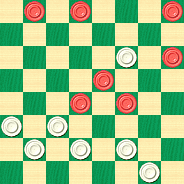
WHITE
White to Play and Win
W:W32,27,26,25,22,21,11:B19,18,15,12,4,2,1.
You won't have much trouble with this one, and the solution is rather nice, although there are a couple of ways to go wrong. When you're ready, an easy peasy click on Read More will reveal everything.![]()
Sinclair's Sacrifice

Sinclair gasoline stations are common in the western United States, with some in the Great Plains and just a handful on the East Coast--- but not a single one in Hawai`i. We can only guess that Sinclair Oil decided to sacrifice participation in the admittedly small and difficult to supply Hawaiian market, in favor of more profitable ventures. We can hardly blame them.
But our subject today is a study attributed to checkerist A. Sinclair, a gentleman who we are almost certain is in no way an antecedent of today's Sinclair Oil. The study is taken from Ben Boland's marvelous classic, Famous Positions in the Game of Checkers.
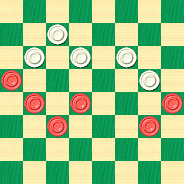
BLACK
Black to Play and Draw
B:W27,24,23,22,17:B20,16,15,13,11,9.
Black is a man up, but with no safe moves, that advantage is highly temporary. How can he get the draw here? We think you'll find the solution nothing short of amazing, and the title of this column gives you a big hint. Does that oil the skids enough to lead you to a solution? Step on the gas and work it out, then motor your mouse over to Read More to see the amazing drawing method, explanatory notes, several sample games, and two supplementary positions.![]()
Uncle Ben's Porch: Tommy Goes to High School

Tommy Wagner was learning that high school is a scary place for a new freshman.
He had been a star in his central Florida middle school, maintaining top academic status while leading his checker team to a State Championship.
But now he was at a large regional high school, which drew students from all over town, and he was a lowly freshman to boot.
Of course, he wanted a spot on the Checker Team, and he knew he was good, but he'd have to compete with experienced 11th and 12th graders. The Checker Varsity even had a titled Master player on their roster. Tommy knew he would have to play Junior Varsity for at least a year, maybe two.
It bothered him. A lot.
It was a Saturday morning, and he was on his way to Uncle Ben's place. Uncle Ben was the kindly retired professional checkerist who gave Tommy free lessons nearly every week. He wasn't really Tommy's uncle, of course, but everyone just called him "Uncle Ben."
But Tommy didn't want to go this morning. He wanted to stay home and sulk, and would have done that had his mother not chased him out of the house.

"You've been in a terrible mood these past few days," she had said, "and I don't really like it. Now you get on over to Uncle Ben's and don't keep him waiting! And make sure you're polite when you get there!"
Tommy didn't answer, and let the screen door bang a little too hard on his way out. He even kicked at a garbage can after he had walked a couple of blocks.
Finally he reached Uncle Ben's porch. Hands in his pockets, he shuffled up the steps.

Uncle Ben, of course, instantly saw that something was wrong, and it wasn't very hard for him to guess what it was.
"Tommy. You need to stop this," he said, in a stern tone that Tommy had never, ever heard from him. It got Tommy's attention.
He took his hands out of his pockets and sat in a chair next to Uncle Ben. He was on the verge of tears.
"I know how badly you want to play Varsity," Uncle Ben said. "We went through the same thing in middle school, remember?"
"Yes ... but ... that was different," Tommy managed to say.
"Different? How so?"

Coach Schann
"I just captained the State Champion middle school team!" Tommy said. "Why can't Coach Schann see that?"
"I'm certain he does see that," Uncle Ben replied, "but do you realize that he has a titled Master and four ranked Experts on his team right now? Tommy, what's your rank?"
"Class A," Tommy said, almost in a whisper.
"What was that, Tommy? I don't think I heard you."
"Class A, Uncle Ben." Tommy swallowed hard, fighting back emotion.
"Yes, you made Class A at the end of last year. Now, do you suppose you should replace an Expert or a Master on the high school team? Do you expect Coach Schann to just say, here comes Tommy Wagner, I'll put him on the team even though he's lower ranked than everyone else?"
"But I ..."
"Yes, Tommy, you lead your team to victory, and that was a great achievement. You should be proud. But you should not be vain. You're good, but there are others who are better, and you'll have to earn your way up through study and practice."
"I had to do that in middle school! I don't want to do it all over again!"
"But do it you must. And it will be another new game when you get to college in a few years. In this life, we are always earning our way. Nothing worthwhile is given to us for free."

Uncle Ben poured some lemonade from the waiting pitcher. For a while, neither he nor Tommy said a word. Tommy was obviously thinking about what Uncle Ben had said.
Finally, Tommy broke the silence.
"Time's passing," he said. "I had better get to work if I want to make Varsity in the next year or two."
Uncle Ben just smiled, and turned to the waiting checkerboard. "Very well," he said, "how about taking a look at this position and see what you make of it?"
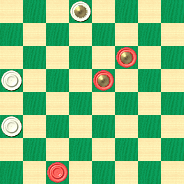
BLACK
Black to Play and Win
B:WK31,20,12:BK22,K18,3.
Would you make it to the High School Varsity? How about the Junior Varsity? Solve the problem, then click on Read More to see the solution, a sample game, and fourteen additional examples of this theme.![]()
January Kickoff
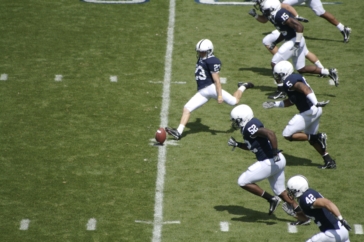
Did you watch football on New Year's Day? Although we're writing this column weeks in advance, we can tell you for sure that no, The Checker Maven staff didn't watch football on New Year's Day or any other day, although we do admit to having seen a football game on television as recently as 1978. We understand football's great popularity, but it just isn't our thing.
So instead we'll kick off our checker year with a game that dates back even further, to 1908. The game is a bit flawed but nonetheless an interesting over the board contest. Let's have a look.
| 1. | 10-15 | 23-18 |
| 2. | 12-16 | 26-23 |
| 3. | 16-20 | 21-17 |
| 4. | 9-13 | 17-14 |
| 5. | 8-12 | 14-9 |
| 6. | 5x14 | 18x9 |
| 7. | 4-8 |
7-10 was likely better here, though the text move certainly allows for a draw.
| 7. | ... | 24-19 |
| 8. | 15x24 | 28x19 |
| 9. | 7-10 |
11-15 evaluates to a likely draw and may be best. Deep analysis also evaluates the current position as a probable draw that may be more difficult to find over the board.
| 9. | ... | 23-18 |
22-18 was correct. The edge passes to Black who now might win.
| 10. | 11-16 | 27-23 |
| 11. | 20-24 | |
This unfortunate move turns a probable Black win into a certain White win, and now your New Year's task is twofold. First, correct this last error and give what could have been Black's winning move. Then, continuing on from the text move, show how White wins (it's rather easy). When you've got it, click on Read More to see the solution.
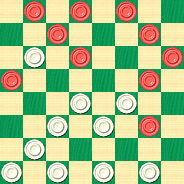
WHITE
White to Play and Win
W:W32,31,30,29,25,23,22,19,18,9:B24,16,13,12,10,8,6,3,2,1.
![]()
The Checker Maven is produced at editorial offices in Honolulu, Hawai`i, as a completely non-commercial public service from which no profit is obtained or sought. Original material is Copyright © 2004-2025 Avi Gobbler Publishing. Other material is public domain, as attributed, or licensed under Creative Commons. Information presented on this site is offered as-is, at no cost, and bears no express or implied warranty as to accuracy or usability. You agree that you use such information entirely at your own risk. No liabilities of any kind under any legal theory whatsoever are accepted. The Checker Maven is dedicated to the memory of Mr. Bob Newell, Sr.

